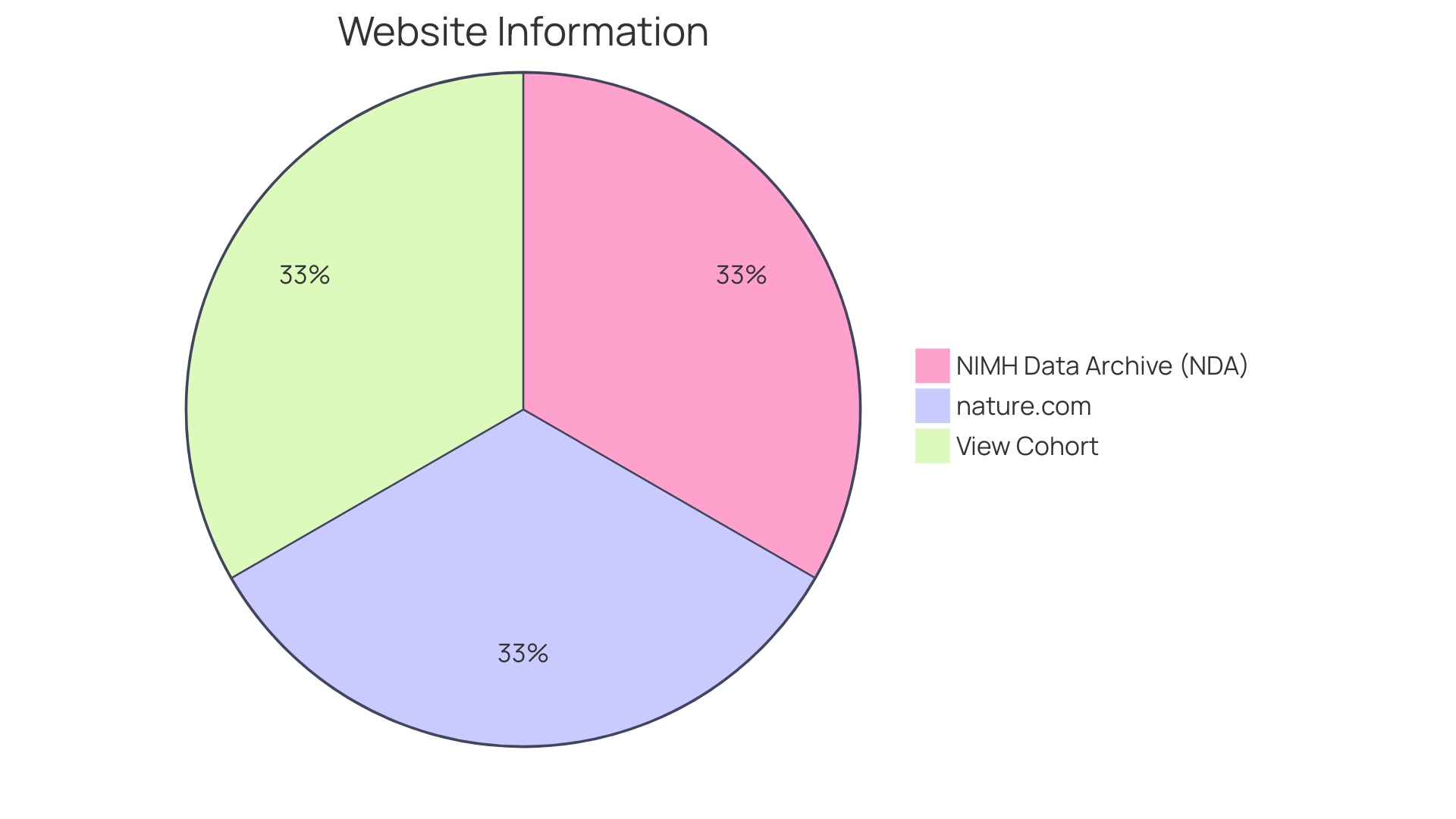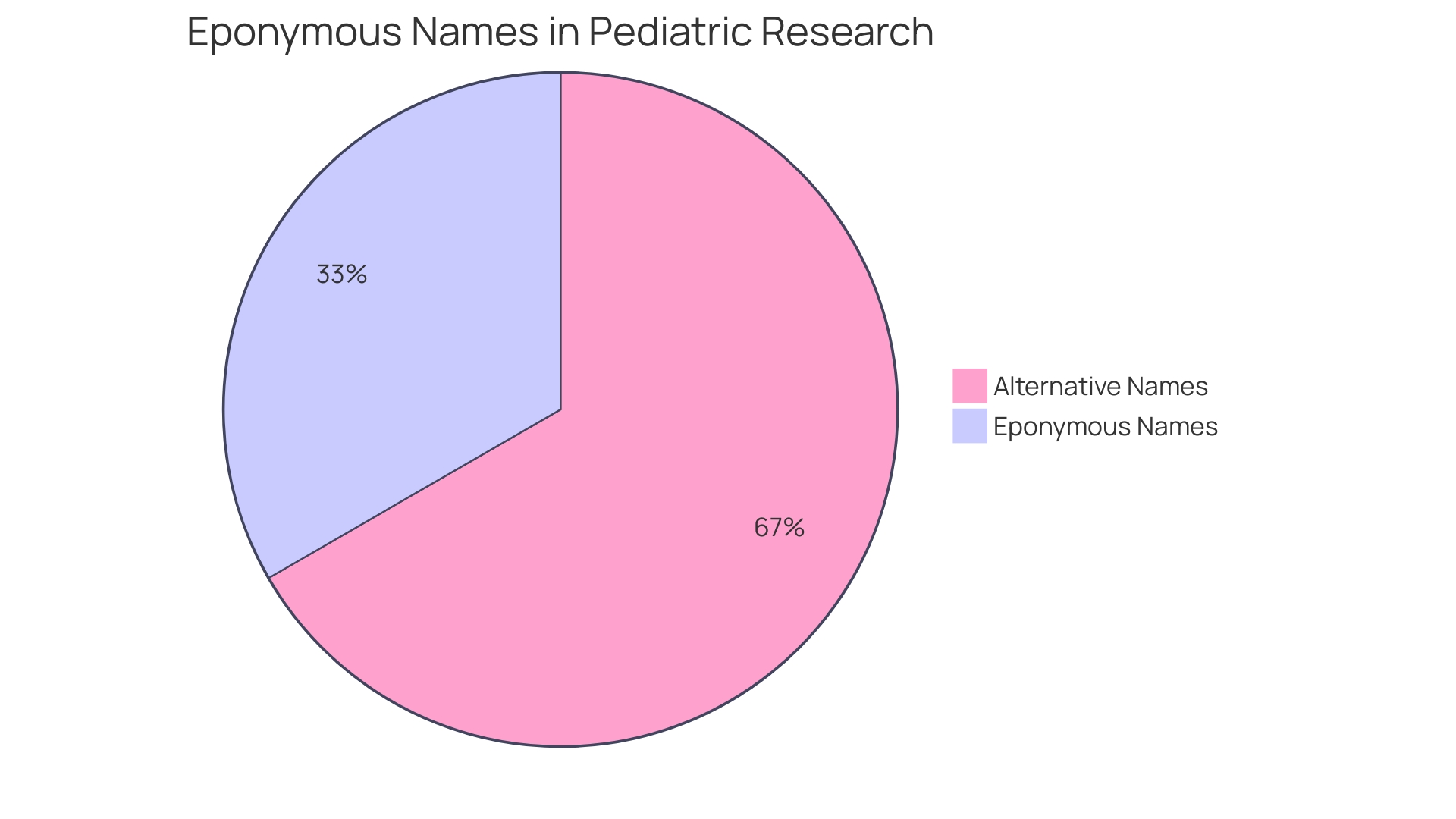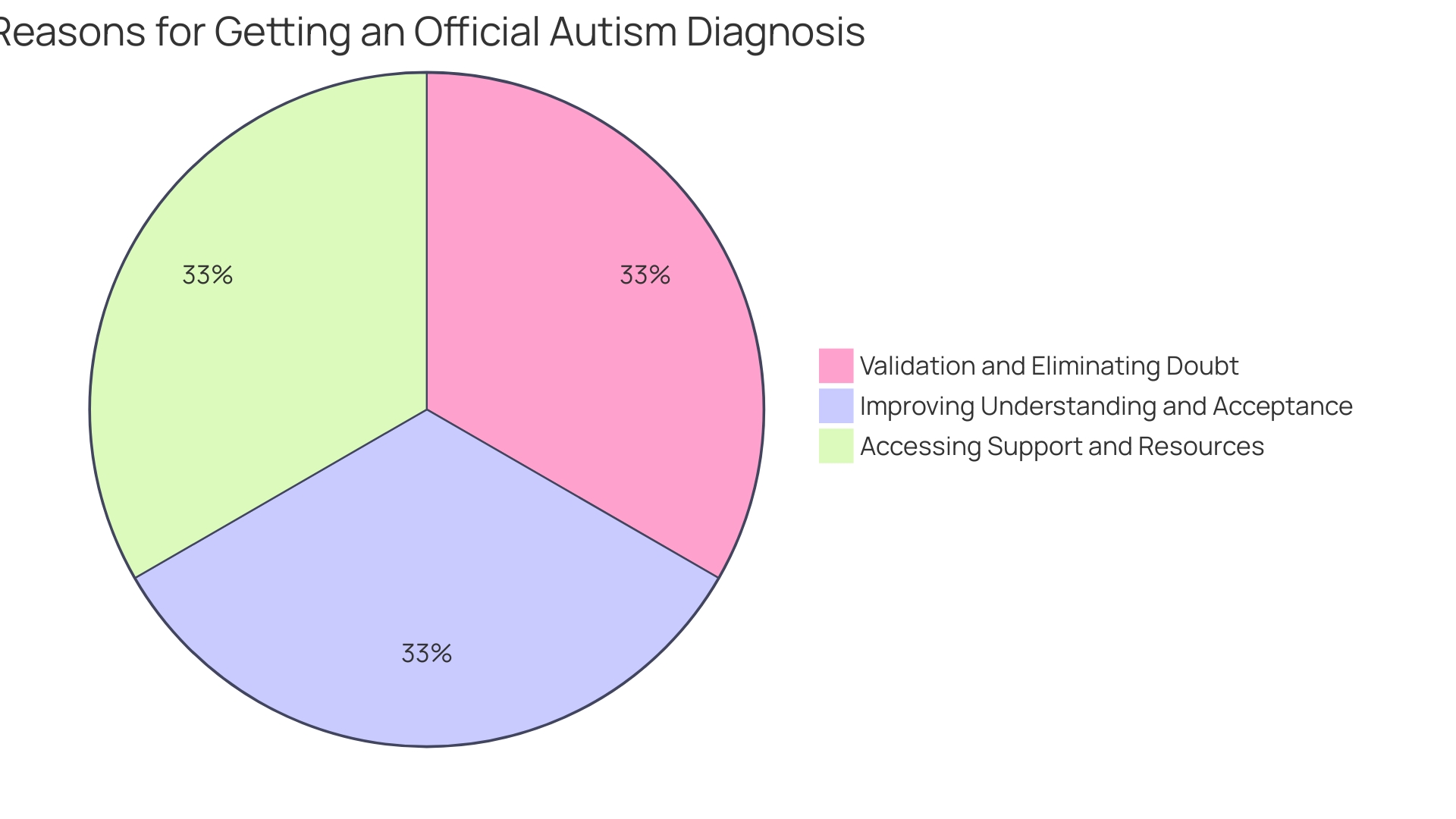Introduction
The journey of understanding Asperger's syndrome and its place within the broader autism spectrum disorder (ASD) has evolved over time. This article explores the historical context of Asperger's as a separate diagnosis, the current diagnostic criteria of ASD, the key differences in symptoms and characteristics, speech and language differences, cognitive functioning differences, the age of onset and diagnosis, social interaction and communication challenges, behavioral patterns and repetitive behaviors, the impact of diagnostic changes on treatment and support, and the importance of early intervention and individualized support. By delving into these topics, we can gain a deeper understanding of Asperger's syndrome and its impact on individuals and their families.
Historical Context: Asperger's as a Separate Diagnosis
The delineation of Asperger's syndrome as a distinct entity has evolved significantly over time. The term 'autism,' from the Greek 'autos,' meaning 'self,' was introduced by Swiss psychiatrist Eugen Bleuler in 1911 to describe a certain kind of self-focused thought seen in schizophrenia. For decades, autism was conflated with schizophrenia or considered a symptom of other psychological disorders.
It wasn't until the 1940s that autism began to be recognized as a unique condition, thanks to the work of psychiatrists Leo Kanner and Hans Asperger. Each worked independently to define autism as a distinct syndrome, with Asperger's syndrome considered a 'high functioning' form within the spectrum. This recognition, however, came with ethical complexities.
The eponymous naming of conditions after individuals, such as Asperger's syndrome, is now under scrutiny. Pediatric Research has emphasized the need for non-eponymous names due to the often unknown ethical backgrounds of these individuals and the predominantly white, privileged demographic they represent. This shift in naming conventions is part of a broader, more inclusive and ethical approach to diagnosing and understanding neurodevelopmental disorders.
It acknowledges the spectrum of autism and the diverse experiences of individuals, as seen in the late diagnosis of actor Anthony Hopkins with Asperger's. The narrative of autism spectrum disorder continues to evolve, embracing a multifaceted understanding that goes beyond a single name or diagnosis.
Current Diagnostic Criteria: Autism Spectrum Disorder (ASD)
Autism Spectrum Disorder (ASD) represents a diverse group of neurodevelopmental conditions, characterized by challenges in social interaction, communication, and often by the presence of repetitive behaviors. Asperger's syndrome, once considered a separate condition, now falls under the ASD umbrella since the updates in diagnostic criteria. It's important to understand that while professional diagnosis can provide access to certain services and support, the autistic community embraces self-identification, acknowledging the limitations and inconclusiveness of some medical testing protocols.
The shift towards using non-eponymous names for conditions, as championed by Pediatric Research, also reflects a broader, more ethical approach in the medical community. Recognizing that the previous namesake of Asperger's syndrome does not align with current ethical standards, and that most eponyms do not represent the diversity of those affected by ASD, there's a growing consensus to employ more inclusive, descriptive terminology.
Diagnosis of ASD has evolved with time. The ICD-11, for example, outlines ASD with a spectrum of features that may not always be apparent through direct observation, which has sparked debates about the clinical utility of the current diagnostic framework. This new model leans towards recognizing ASD as an 'identity' rather than solely a behavioral or neurodevelopmental disorder, which introduces subjective elements into the diagnostic process.
In practice, diagnosing ASD involves a comprehensive assessment by a multidisciplinary team and considers input from various sources, including family and educators. Recognizing that early intervention is key, countries like Australia provide robust support systems such as the National Disability Insurance Scheme (NDIS) to ensure that individuals with ASD receive the personalized aid they require to reach their fullest potential. Education and inclusion remain critical in cultivating the abilities of children with ASD, emphasizing the significance of an informed, supportive community in enhancing their developmental trajectory.
Key Differences: Symptoms and Characteristics
Autism spectrum disorder (ASD) encompasses a range of neurodevelopmental conditions, each with its own nuances. While Asperger's syndrome, a subset of ASD, shares core symptoms with other forms of autism, such as challenges in social interactions and communication, it also has its own distinct features. Individuals with Asperger's typically exhibit average or above-average intelligence and may not face the same language development delays as seen in other ASD diagnoses.
They often develop a deep, all-consuming interest in specific topics and can amass a wealth of knowledge in their chosen areas. These unique traits contribute to the rich tapestry of the autism spectrum, highlighting the importance of understanding and recognizing the diversity within these conditions. It's vital to note that the terminology used to describe these conditions is evolving, with a growing preference for non-eponymous names to promote inclusivity and ethical considerations.
This reflects a broader shift toward person-first language in the discourse surrounding autism, emphasizing the individual over the diagnosis.

Speech and Language Differences
Individuals with Asperger's syndrome often exhibit unique speech and language characteristics that can significantly affect their communication and social interactions. These traits may include a formal or distinct speaking style, an advanced vocabulary, challenges in understanding sarcasm or humor, and a preference for discussing specific topics in depth. Inner speech, a cognitive process crucial for working memory and speech production, is also an area of interest when considering the nuances of Asperger's syndrome.
Inner speech facilitates the rehearsal within the phonological loop, serving as a memory aid and helping to label stimuli abstractly and flexibly due to its linguistic basis. Understanding these intricacies can provide key insights into the cognitive world of individuals with Asperger's and guide effective communication strategies.
Cognitive Functioning Differences
The cognitive functioning of individuals with Asperger's syndrome often diverges from typical patterns, affecting the way they think, learn, and solve problems. These differences can be profound and nuanced; they are influenced by various factors, including motivation levels and anxiety at the time of task execution. Reports by autistic adults themselves highlight the variability of their skills across contexts and times.
They emphasize that their particular way of thinking may alter their approach to tasks, suggesting a need for autism researchers to consider these personal insights in their studies.
Autistic individuals show distinct processing of social signals, which is an important consideration for social learning and interaction. Interestingly, research demonstrates that autistic adults can enjoy and benefit from social learning as much as their neurotypical peers, a point that underscores the potential for inclusive educational strategies.
These cognitive traits are also reflected in the broader discourse around giftedness and intellectual diversity. Studies indicate that individuals who are more gifted in nonverbal or mathematical domains often pursue careers in the hard sciences—areas driven by concrete facts and figures. This propensity may be linked to the way gifted individuals process information, which can be particularly relevant when considering the cognitive profiles of those on the autism spectrum.
Acknowledging the diverse cognitive landscapes among individuals with Asperger's syndrome is not only critical for providing appropriate educational support but also resonates with the broader imperative to recognize and respect neurodiversity in society.

Age of Onset and Diagnosis
Asperger's syndrome, historically regarded as a distinct high-functioning form of autism, has been at the heart of a paradigm shift in how neurodevelopmental disorders are perceived and named. Recent dialogues in the medical community, such as those led by the editorial team at Pediatric Research, are moving away from eponymous names for such conditions, in part due to the complex ethical backgrounds of individuals after whom these disorders are named. This change reflects a broader commitment to ethical considerations and inclusivity in medical terminology.
Diagnosis of Asperger's syndrome, now more commonly referred to within the broader classification of autism spectrum disorders (ASD), can vary widely in terms of age. A striking example is the late diagnosis of actor Anthony Hopkins, who was diagnosed in his 70s. Such late diagnoses highlight the 'hidden disability' nature of the condition, where signs may not be outwardly visible.
This underscores the importance of understanding that autism truly is a spectrum, encompassing a diverse range of experiences and traits.
The trend towards non-eponymous naming is significant not only for the sake of historical accuracy but also for the inclusivity of all ethnic backgrounds. It aligns with the neurodiversity movement, which champions the uniqueness of individuals and recognizes a broad array of neurodevelopmental conditions, including ADHD, dyslexia, and dyspraxia, alongside autism.
Early and accurate diagnosis of ASD is pivotal, as it allows for timely intervention and support, potentially enhancing the standard of life for individuals with ASD and their families. The medical community, including fields such as stem cell research and machine learning, is actively developing new diagnostic methods to aid in the early identification of ASD, recognizing the profound impact such advancements can have.
Social Interaction and Communication Challenges
Asperger's syndrome, part of the broader autism spectrum disorder (ASD), encompasses a range of social and communicative challenges that each person experiences uniquely. Individuals like Lil, a 17-year-old transitioning from special school to a community-based program in Southampton, UK, face heightened uncertainty and unfamiliarity during such changes. These transitions can be complex for those with Asperger's due to their difficulties with new routines and social settings.
Research suggests that autistic individuals often have an intricate relationship with their environment, requiring equity and support to thrive, similar to other children. They bring unique assets to their communities, as emphasized by Dr. David (Dan) R. Offord, who advocated for a fair 'race' for all children, including those with disabilities. This fairness is about acknowledging their strengths and ensuring a supportive environment that fosters mental health and well-being.
Engagement in social interaction is not only challenging but also essential for autistic individuals. Studies show that they benefit from social learning just as much as neurotypical individuals. However, due to the poor processing of social signals, traditional learning environments may not always cater adequately to their needs.
It's interesting to note that while autistic students may excel in academics, navigating the social landscape of higher education can present significant hurdles.
Compensation is a strategy many autistic individuals employ to adapt to societal expectations. This involves both conscious and unconscious efforts to mask autistic traits or mimic neurotypical behaviors. Although often overlooked, the ability of autistic individuals to compensate reveals a remarkable adaptability in a world not designed for them.
In conclusion, understanding and supporting the social and communicative needs of individuals with Asperger's requires a comprehensive approach. By focusing on their strengths, providing equitable support, and adapting our social environments, we can facilitate their participation and success in all areas of life.
Behavioral Patterns and Repetitive Behaviors
Understanding Asperger's Syndrome, now more commonly referred to within the broader category of Autism Spectrum Disorder (ASD), calls for recognizing the unique behavioral patterns and repetitive behaviors characteristic of individuals with this condition. Typically, these individuals may show intense focus on specific topics, adhere to routines, and exhibit distinct social and communicative behaviors. According to recent qualitative thematic analysis, prevalent themes across ASD include social difficulties leading to isolation and a propensity towards hyperfixation on certain subjects, which in some cases, can extend to extreme ideologies or actors online.
The change in terminology from Asperger's to ASD reflects an ethical shift in the medical community. Pediatric Research, for instance, now exclusively uses non-eponymous names for conditions, recognizing that the association with historical figures like Hans Asperger, whose ties to unethical practices during the Nazi era were concealed, is problematic and that these eponyms predominantly represent white, privileged individuals.
Statistics reveal that 1 in 45 adults in the U.S. have been diagnosed with ASD. This highlights the widespread nature of the condition, which manifests through challenges in social communication and repetitive behaviors, regardless of age. Individuals with what was formerly known as high-functioning autism, despite having higher intellectual capabilities, still encounter considerable obstacles in social interaction and may have intense sensory sensitivities.
Understanding these aspects of ASD is crucial for creating supportive environments that accommodate the unique needs of individuals with the condition, promoting their well-being, and ensuring they can lead fulfilling lives.

Impact of Diagnostic Changes on Treatment and Support
The landscape of understanding autism spectrum disorder (ASD) and its various manifestations, including Asperger's syndrome, has evolved significantly. Notably, the ethical considerations regarding eponymous naming in medical conditions have prompted journals like Pediatric Research to advocate for non-eponymous alternative names. This shift is due to the often unknown ethical backgrounds of individuals after whom diseases are named and the desire to move away from names associated predominantly with white, privileged individuals.
The historical context of Hans Asperger, whose work during the Nazi era became controversial, underscores the importance of this change. This move also aligns with modern diagnostic approaches that favor a spectrum-based understanding of autism, as delineated by the latest International Classification of Diseases (ICD-11). The ICD-11 outlines ASD with a broad array of possible features, which may not always be directly observable, thus challenging the clinical utility of the diagnosis.
This conceptualization suggests a departure from the medical model towards a social model, focusing on the 'identity' and inner experiences of the individual, characterized by subjective and nuanced symptoms. These diagnostic evolutions have significant implications for the treatment and support structures for individuals with ASD, as it necessitates a more personalized and precise approach to understanding their unique needs.
Importance of Early Intervention and Individualized Support
Recognizing and nurturing the unique abilities of individuals with Asperger's syndrome from a young age is paramount. Tailored support and early intervention are key to enhancing their development and quality of life. For instance, tailored programs such as those offered by Friends of St James Park demonstrate how community-based initiatives can provide meaningful skill-building and social opportunities.
These environments foster growth by embracing the strengths of individuals with Asperger's, reducing stress, and creating a fair and supportive 'race,' as envisioned by the late Dr. David Offord, a renowned child psychiatrist.
The journey toward a stable Autistic identity is especially critical during adolescence and early adulthood, a time of profound personal growth. Encouraging self-reflection and societal contribution allows individuals to form a sense of self that is continuous and distinct within social contexts. As highlighted by recent research, the prevalence of autism diagnoses is rising, underscoring the need for inclusive social participation in schools and communities to prevent the risk of exclusion of Autistic children, particularly those with concurrent emotional and behavioral challenges.
In light of these considerations, it's essential to provide comprehensive support systems that address the unmet needs of individuals with Asperger's while leveraging their contributions to society. This approach aligns with the overarching goals of the Interagency Autism Coordinating Committee (IACC) to enhance coordination and communication across various sectors, reflecting the expertise of diverse stakeholders within the autism community. Ultimately, the aim is to ensure that every individual with Asperger's is equipped with the resources necessary to thrive in a society that values their mental health and well-being.
Conclusion
In conclusion, understanding Asperger's syndrome and its place within the autism spectrum disorder (ASD) is crucial for providing appropriate support and intervention. The historical context of Asperger's highlights its recognition as a distinct condition within the spectrum, and the shift towards non-eponymous names reflects a more inclusive and ethical approach.
The current diagnostic criteria emphasize the importance of professional diagnosis and recognizing the diverse experiences of individuals with ASD. Early intervention and individualized support play a vital role in enhancing their well-being and development, with programs like the National Disability Insurance Scheme (NDIS) providing comprehensive support.
Asperger's syndrome exhibits unique symptoms and characteristics, such as average or above-average intelligence and a deep interest in specific topics. Understanding the speech and language differences, as well as the cognitive functioning differences, can guide effective communication strategies and educational support.
The age of onset and diagnosis can vary widely, underscoring the importance of early identification. The trend towards non-eponymous naming aligns with the broader neurodiversity movement and promotes inclusivity.
Social interaction and communication challenges require a comprehensive approach that focuses on strengths and creates supportive environments. By embracing the abilities of individuals with Asperger's and promoting inclusive social participation, we can ensure their well-being and success in all areas of life.
In conclusion, recognizing and supporting the unique abilities of individuals with Asperger's syndrome from a young age is paramount. Early intervention and individualized support are key to their development and quality of life. By creating inclusive environments and providing comprehensive support systems, we can empower individuals with Asperger's to thrive in a society that values their mental health and well-being.




